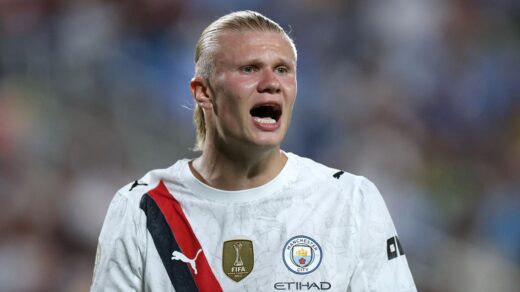There are two distinct parts of every World Cup – and you may prefer one or the other.
The first is the group stage. It’s a feast of non-stop football; four games a day, back-to-back-to-back-to-back, stories galore and always something new to look at. You’ll get blowouts, but you’ll also get heaps of excitement.
The second is the knockouts. This is, as the Flight of the Conchords would say, Business Time. You’ll get some surprising teams making the last 16 but the wheat is quickly sorted from the chaff, as the pressure builds, the penalty shootouts begin and eventually the winner is crowned.
Watch the world’s best footballers every week with beIN SPORTS on Kayo. LIVE coverage from Bundesliga, Ligue 1, Serie A, Carabao Cup, EFL & SPFL. New to Kayo? Start your free trial now >
And this has all been the case in Qatar. The groups had Saudi Arabia’s stunning upset of Argentina; Japan becoming the kings of the comeback on route to winning a group that also had Spain and Germany; and of course the Socceroos’ magical run to the round of 16.
But then the actual round of 16 saw chalk – Morocco’s win over Spain on penalties excepted, the favourites all got through, and now the powers of world football will decide who claims ultimate glory.
Brazil thrash South Korea to reach QFs | 00:55
There’s no wrong answer on which section of the tournament you like best. But the real problem is FIFA is about to ruin the first bit – unless they, against form, listen to common sense.
It all started when it was announced the tournament would expand from 32 teams, where it has been since France 1998, to a whopping 48 teams for the 2026 event held across Canada, Mexico and the United States.
The FIFA Council approved the plan back in January 2017, and it’s all about money.
With 211 member associations, and all of them getting a vote, FIFA president Gianni Infantino’s job isn’t to placate the top-ranking nations; it’s to placate as many as possible.
And if that means giving more countries the opportunity to qualify for the World Cup, and rake in the cash which comes along with qualification, then that’s at least 16 more voters that are happy with Infantino.
It’s not a completely terrible idea. Certain continents, in particular Africa, have deserved more spots for some time – their 54 teams have to fight for five slots. By comparison, South America’s 10 teams fight for four slots plus a playoff bid.
Reflecting this discrepancy, along with Infantino’s interest in making the big but less traditionally powerful confederations happy, the extra 16 spots for the 2026 tournament have been given out reasonably evenly.
2022 WORLD CUP SLOTS
Asia (AFC): 5 (including host) + 1 playoff bid
Africa (CAF): 5
North/Central America (CONCACAF): 3 + 1 playoff bid
South America (CONMEBOL): 4 + 1 playoff bid
Oceania (OFC): 1 playoff bid
Europe (UEFA): 13
Total: 32
2026 WORLD CUP SLOTS
Asia (AFC): 8 + 1 playoff bid (+3 from 2022)
Africa (CAF): 9 + 1 playoff bid (+4)
North/Central America (CONCACAF): 6 (including 3 hosts) + 2 playoff bids (+3)
South America (CONMEBOL): 6 + 1 playoff bid (+2)
Oceania (OFC): 1 + 1 playoff bid (+1)
Europe (UEFA): 16 (+3)
Total: 48
Football great appears to knee man | 00:52
This will make some of the qualifying tournaments less dramatic, certainly. Over half of South America will make the World Cup finals, so Brazil and Argentina will never be in any danger; from an Aussie perspective, if the Socceroos ever fail to make it out of Asian qualifying again it’d be a humungous stuff-up.
There’ll also be more minnows at the event, which may mean more blowouts, but that can be spun positively as well. And hey, maybe it means more Saudis over Argentina-like upsets?
“It means that we will have to find 16 more good teams,” Arsene Wenger, FIFA’s Chief of Global Football Development, said recently.
“I am convinced that if the teams, the countries have more opportunities to go to the world stage, it will do more for (football) development inside that country.”
WHO WOULD’VE MADE A 48-TEAM WORLD CUP BASED ON 2022 QUALIFYING RESULTS?
Asia (AFC): UAE, Iraq, Oman (plus Syria or China in playoff)
Africa (CAF): Egypt, Algeria, Nigeria, DR Congo and/or Mali (four direct, one in playoff)
North/Central America (CONCACAF): Costa Rica, Panama, Jamaica (plus El Salvador, Honduras in playoff)
South America (CONMEBOL): Peru, Colombia (plus Chile in playoff)
Oceania (OFC): New Zealand (plus Solomon Islands in playoff)
Europe (UEFA): Ukraine, Sweden, North Macedonia
Cat interrupts Brazil press conference | 00:23
But the real issue comes once we actually get to the main event.
After all, 32 teams creates a nice clean format. It gives us eight groups of four, with three matchdays per group – including the incredible final day where both games start at the same time, reducing the chance for collusion on results, and creates the type of drama we saw with South Korea advancing over Uruguay thanks to a late winner. 16 teams advance into a straight knockout bracket and away we go.
But 48 doesn’t work the same way. It’s divisible by four, so you could have four-team groups… but then you’ve got 12 groups. You can’t have the group winners and runners-up advancing into a 24-team bracket – it just doesn’t work mathematically.
Therefore FIFA’s current plan sees the 48 teams being spread out into groups of three teams.
This has a multitude of problems. In a three-team group, each nation only plays twice, and who wants to go through an entire four-year qualifying to play twice?
But there’s a legitimate competitive issue as well.
Richarlison dances to lovely team goal! | 00:29
In a three-team group, one team is inactive on each group matchday. So what if the team that plays its two games first, and has to watch the final game, can be eliminated by the two remaining teams colluding on a draw?
At the 1982 World Cup, the infamous Disgrace of Gijon saw West Germany and Austria conspire to create a 1-0 win for the former, which ensured they would both advance at the expense of Algeria (who had already played their last game).
That unsportsmanlike act saw the rules changed, and since 1986 the final group stage games have been played at the same time – creating an incredible and exciting tradition.
“Our arguments show that the introduction of groups of three is a terrible step back in the history of the World Cup,” Julien Guyon, a mathematician from New York’s Columbia University, wrote in the Journal of Sports Analytics last year.
“Not only (does) it make the ‘disgrace of Gijon’ possible again but it makes the risk of its repetition very high. Of course, not all teams would collude if given the opportunity, but even risk of match-fixing may seriously tarnish the World Cup, as unpredictability of the outcome is fundamental to its popularity, and to sport’s popularity in general.”
So three-team groups are pretty much a disaster. But four-team groups are a problem too, as discussed. And the solutions are all awkward.
POTENTIAL FOUR-TEAM GROUP FORMATS AT A 48-TEAM WORLD CUP
a) 12 groups of four, group winners plus four best runners-up advance into 16-team knockout stage
b) 12 groups of four, group winners, runners-up and eight best third-place teams advance into 32-team knockout stage
c) Tournament split into two 24-team events with six groups of four. Group winners plus four best third-place teams advance into 16-team knockout stage (like 1986-94 format). Top two teams in each mini-tournament advance into final four to decide overall winner
German manager survives World Cup fail | 00:34
It appears options b) and c) are the most likely solutions.
Either way you still have some slight problems – some group winners get to play third-placed teams, others play runners-up; you’d need to play as many as 104 games at a time when players are already concerned about the enormous workload they’re copping in modern football.
But it’s mathematically impossible to create a nice, clean tournament structure with 48 teams, so we have to work with the (controversial) decision that has already been made. And any four-team group idea would be infinitely better than the three-team group plan, which goes against decades of logic and excitement.
Wenger, speaking on the weekend, appeared to recognise there is a problem.
“This is not decided, but it will be 16 groups of three, 12 groups of four, or two sides of six groups of four, like you organise two 24-team (tournaments),” he said.
“I will not be able to decide that, it will be decided by the FIFA Council, and I think it will be done in the next year.”
Let’s hope they see the light.



